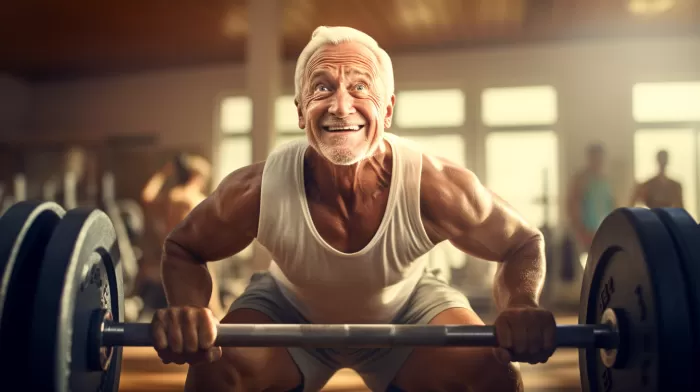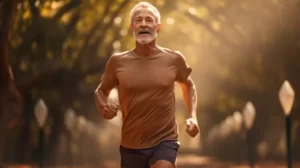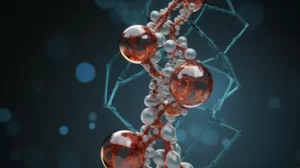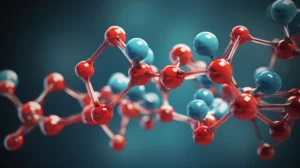Nobody lives forever, but if you want to maximize your health and longevity, scientists have discovered an accessible Fountain of Youth: exercise. Every time you lift a weight or walk around the block, you move closer to rejuvenation. And those healthy benefits happen so profoundly on a cellular level that researchers have been taken aback by the power of the workout.
Mighty Mitochondria
One of the keys to how exercise boosts wellness and youthfulness originates in its effects on mitochondria. Mitochondria are small structures within cells that play a large role in keeping you alive. These organelles are the powerhouses of the body, microscopic laborers that generate the energy to contract and relax muscles and fuel other physiological activities. It is in the mitochondria that the body combines nutrients with oxygen to keep you moving.
Scientists have long known that as we head into old age, our mitochondria can dwindle and become less effective. A large body of research demonstrates that when mitochondria start to misbehave, you lose muscle and you fall victim to many of the functional impairments that bedevil the elderly. Your brain gets smaller. Your hair turns gray and falls out. It hurts to get up in the morning. You start to look and feel old.
Scientists used to think these changes were inevitable and that, as you aged, you lost a certain amount of mitochondria and muscle with each proceeding decade. But many now believe that much of this loss comes from a lack of exercise. And if you keep active, the thinking now goes, you may be able to offset much of this decline.
Research Points to Exercise
That’s certainly what much of the research is showing. For instance, when scientists at McMaster University Medical Center in Hamilton, Ontario, compared the muscle strength of a group of young adults, average age 26, with older folks, average age 70, they found that the older people were 59 percent weaker. But after they put everyone through a six-month weight-training program, they found that the oldsters improved their muscle strength by about 50 percent and were now only 38 percent weaker than the youngsters.
“We were very surprised by the results of the study,” says Simon Melov, Ph.D., one of the researchers. “(This study) gives credence to the value of exercise, not only as a means of improving health, but of reversing the aging process itself, which is an additional incentive to exercise as you get older.”
The older people who took part in this study had spent their whole lives without doing any formal exercise in a gym. Four months after they completed their exercising training for the study, most were still working out. “They were still as strong, they still had the same muscle mass,” notes Mark Tarnopolsky, M.D., Ph. D., who was also involved in the research. “This shows that it’s never too late to start exercising and that you don’t have to spend your life pumping iron in a gym to reap benefits.”
Remarkable Repair
In a more recent study that Tarnopolsky and others performed, laboratory research took a closer look at how exercise benefits mitochondria. That experiment, on animals, found that mice that were genetically programmed to die at a young age lived longer than normal mice when they were compelled to consistently exercise.
These special mice had defective mitochondria that could not be repaired in a normal way. But the scientists found that exercise opened up new, unexpected and unexplained pathways of mitochondrial repair that occurred in every organ. So the researchers couldn’t explain how the mitochondria were being fixed instead of deleted.
In this latest experiment, researchers put the animals aerobic exercise routines just about as strenuous as marathon running. However, Tarnopolsky and his fellow scientists don’t believe that beneficial exercise has to necessarily be aerobic or exhausting. As Tarnopolsky told The New York Times, “(Any exercise) is better than nothing.” He advises that merely walking for a few minutes and then gradually boosting your activity can help: “Exercise alters the course of aging.”
Tarnopolsky also adds that: “Many people falsely believe that the benefits of exercise will be found in a pill. We have clearly shown that there is no substitute for the real thing of exercise when it comes to protection from aging.”
Pool Your Resources
Apparently, the secret of the Fountain of Youth is that you have to swim across it — it is the swimming that produces the youth.
As Jacqueline Bourgeois, M.D., a researcher who works with Tarnopolsky puts it: “The recipe for healthy aging is very simple, and that’s exercise. The problem is that most people find it a difficult recipe to follow.”
The best advice is to start following that recipe today. You don’t want to wake up one morning in a decade or so and lament that you’ll never have that recipe again.



